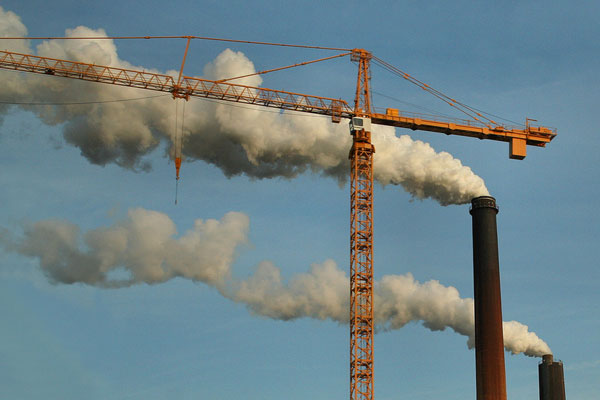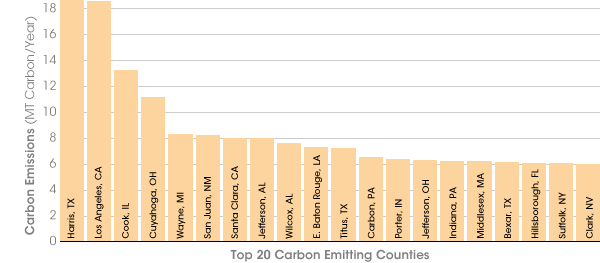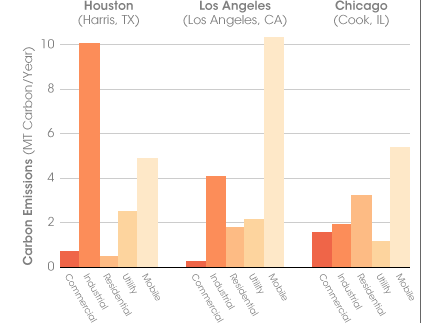
This is a little bit old, but it’s new to me: in 2008, scientists from Purdue, Colorado State, and Lawrence Berkeley National Laboratory published "the first detailed inventory of carbon dioxide emissions from the burning of fossil fuels across the United States": the Vulcan Project.
The data is from 2002, but it’s highly detailed: "The Vulcan project has achieved the quantification of the 2002 U.S. fossil fuel CO2 emissions at the scale of individual factories, powerplants, roadways and neighborhoods on an hourly basis." As a result, it’s possible to look at carbon emissions by county. In 2002, Cook County had the third-highest emissions in the country by county, behind Harris (TX) and Los Angeles:

Graph by Robert Simmon/NASA
The causes for Harris and Los Angeles are pretty obvious: petrochemical manufacturing in Houston, driving in Los Angeles. So why are Cook County’s emissions so high? It turns out the county’s more balanced in its carbon emissions:

Graph by Robert Simmon/NASA
Transportation makes up the biggest chunk. But note residential poking out. Chief researcher and atmospheric scientist Kevin Gurney attributes this to the cold weather and the old buildings. Chicago’s obviously colder than Houston and Los Angeles, but I was curious how per capita residential emissions in Chicago compared to other cities in its weight class and latitudes. The answer: not as well.
In 2002, Chicagoans generated 0.60 metric tons of carbon per capita just by living indoors. In Hennepin County (Minneapolis), residents generated 0.55 tons. In Cuyahoga County (Cleveland), it was 0.58; Kings County (Brooklyn), 0.51; Suffolk County (Boston), 0.58. Residents of Wayne County, home of Detroit, generated more: 0.63. To put it in context, Chicagoans generated 110 more pounds of CO2 via housing than Minneapolitans, despite the fact that they live in the coldest major metropolitan area in the United States. So the idea that building stock plays a role in that strikes me as plausible.
But it’s not all bad news! It requires almost four times as much carbon dioxide to live in Skagway. Rural, northern, and western counties dominate per-capita residential carbon-emissions. Cook County ranks 332nd per capita in the Vulcan Project’s list, and 44th per capita in Illinois (number one: Rock Island County, at 0.69 metric tons per capita). So there are still benefits to dense housing, even if that housing’s old.
Photograph: Clearly Ambiguous (CC by 2.0)



